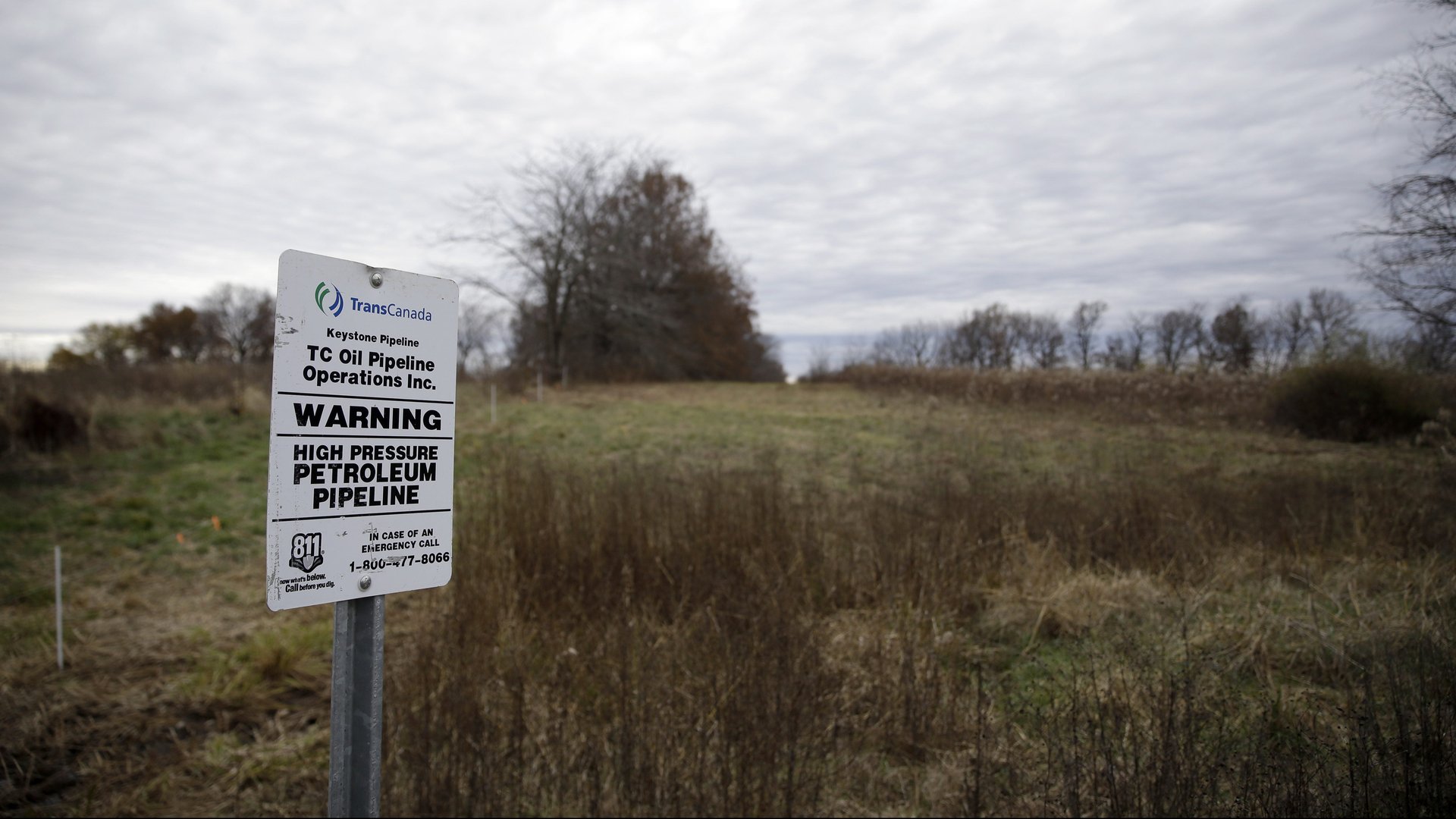The controversial Keystone pipeline just spilled 210,000 gallons of oil in South Dakota
Crews are responding to an oil spill along the Keystone pipeline route in Amherst, South Dakota, according to TransCanada, the company that operates the pipeline.


Crews are responding to an oil spill along the Keystone pipeline route in Amherst, South Dakota, according to TransCanada, the company that operates the pipeline.
At least 210,000 gallons of crude oil derived from oil sands—a thicker, sticker type of oil than conventional crude—spilled from the pipeline into an agricultural area, according to South Dakota’s environment and natural resources agency. That’s the equivalent of 5,000 barrels of oil.
Keystone carries crude from the oil sands in Canada to refineries in Illinois and Texas, and to a distribution center in Oklahoma. Oil sands crude is significantly different from its conventional crude counterpart. The substance flowing through the Keystone pipeline is known as diluted bitumen, or “dilbit,” because the bitumen (the crude oil itself) is so thick and sticky it must be diluted in order to effectively flow through the system. The chemical mixture used to dilute it is a trade secret, but often includes benzene, a carcinogen. It also can be harder to clean up than conventional crude; when Enbridge, a different pipeline company, spilled 900,000 gallons of dilbit in the Kalamazoo River in Michigan in 2010, it took years and more than $1 billion to clean up.
The Keystone pipeline has leaked in South Dakota before, as recently as last spring. In 2010, the first year it was in use, there were 35 Keystone leaks in the US and Canada.
A proposed addition to the Keystone system, called Keystone XL, has been a political flashpoint in the US in recent years. Former president Barack Obama rejected the project (which would have been the fourth phase in the Keystone build-out) in 2015. Soon after Donald Trump became president, he signed memoranda to expedite the environmental review process for Keystone XL.